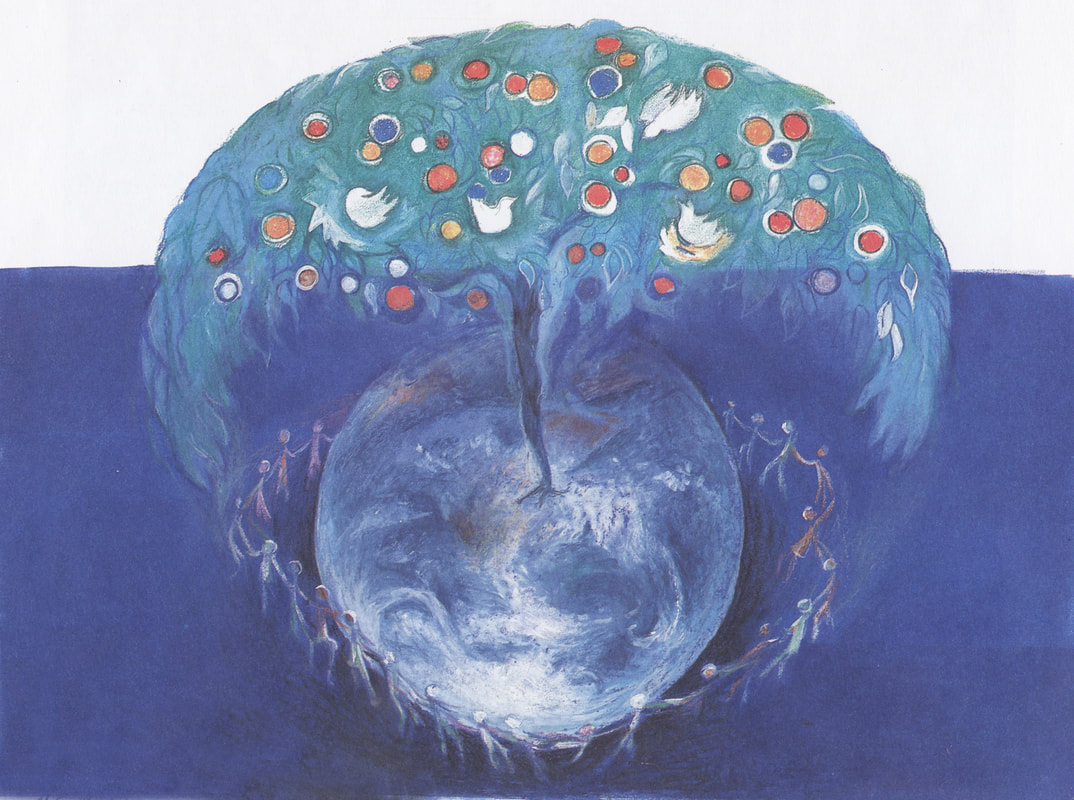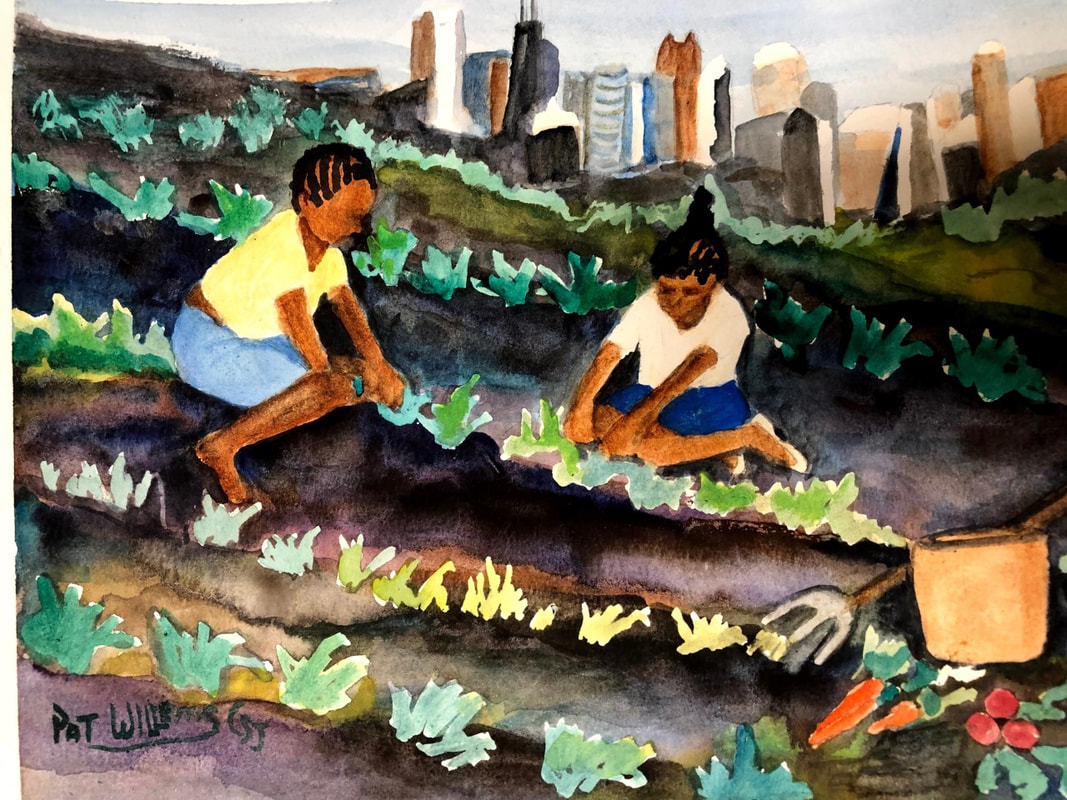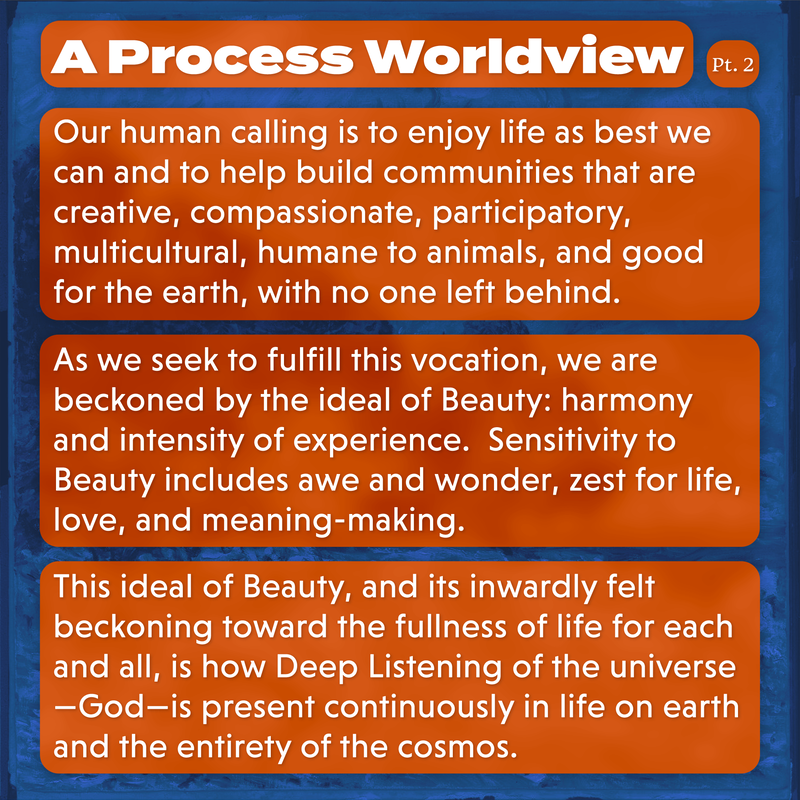- Home
- Process Worldview
- Community
- Art and Music
- Whitehead and Process Thinking
- Podcasts
- Spirituality
- Ecological Civilization
- Education
- Contact
- Social Justice
- Science
- Animals
- Sacred Poems
- Whitehead Videos
- Index of All Titles
- Practicing Process Thought
- Process Spirituality: A Spiritual Alphabet
- Recent Posts
What does the Earth desire?
What does the Earth desire? I will put it in just a few short sentences…. To be admired in her loveliness, to be tasted in her delicious fruits, to be listened to in her teaching, to be endured in the severity of her discipline, to be cared for as a maternal source from whence we come, a destiny to which we return. It’s very simple.”
- Thomas Berry, Thomas Berry Foundation
I have a certain awe of children. In this difficult period of human history I’ve always wanted to assist them to be themselves and to shape a world that would be more filled with joy than our world seems to be. That’s why I dedicated the book The Great Work to the children—but to all the children, and that is the key to the book: the dedication to all the children. To the children who swim beneath the waves of the sea, to the children who live in the soils of the earth, to the children of the trees, to the children of the flowers in the meadows and the crickets in the fields, to the children that fly with the wings of the wind, to the human children, too; to all the children, because none of the children are going to succeed in the future without the others.
- Thomas Berry, The Great Work of the New Millennium
Thomas Berry on his own childhood
I was a young person then, some twelve years old. My family was moving from a more settled part of a Southern town out to the edge of town where the new house was still being built. The house, not yet finished, was situated on a slight incline. Down below was a small creek and there across the creek was a meadow. It was an early afternoon in May when I first looked down over the scene and saw the meadow. The field was covered with lilies rising above the thick grass. A magic moment, this experience gave to my life something, I know not what, that seems to explain my life at a more profound level than almost any other experience I can remember.
It was not only the lilies. It was the singing of the crickets and the woodlands in the distance and the clouds in an otherwise clear sky. It was not something conscious that happened just then. I went on about my life as any young person might do. Perhaps it was not simply this moment that made such a deep impression upon me. Perhaps it was a sensitivity that was developed throughout my childhood. Yet, as the years pass, this moment returns to me, and whenever I think about my basic life attitude and the whole trend of my mind and the causes that I have given my efforts to, I seem to come back to this moment and the impact it has had on my feeling for what is real and worthwhile in life.
*
We might think of a viable future for the planet less as the result of some scientific insight or as dependent on some socio-economic arrangement than as participation in a symphony or as renewed presence to the vast cosmic liturgy. This insight was perhaps something that I vaguely experienced in that first view of the lilies blooming in the meadow across the creek."
- Thomas Berry, "The Meadow Across the Creek," from The Great Work.
It was not only the lilies. It was the singing of the crickets and the woodlands in the distance and the clouds in an otherwise clear sky. It was not something conscious that happened just then. I went on about my life as any young person might do. Perhaps it was not simply this moment that made such a deep impression upon me. Perhaps it was a sensitivity that was developed throughout my childhood. Yet, as the years pass, this moment returns to me, and whenever I think about my basic life attitude and the whole trend of my mind and the causes that I have given my efforts to, I seem to come back to this moment and the impact it has had on my feeling for what is real and worthwhile in life.
*
We might think of a viable future for the planet less as the result of some scientific insight or as dependent on some socio-economic arrangement than as participation in a symphony or as renewed presence to the vast cosmic liturgy. This insight was perhaps something that I vaguely experienced in that first view of the lilies blooming in the meadow across the creek."
- Thomas Berry, "The Meadow Across the Creek," from The Great Work.
Intimacy with the Earth
“Our relationship with the earth involves something more than pragmatic use, academic understanding, or aesthetic appreciation. A truly human intimacy with the earth and with the entire natural world is needed. Our children should be properly introduced to the world in which they live.”
Thomas Berry, “Human Presence,” in The Dream of the Earth
Thomas Berry, “Human Presence,” in The Dream of the Earth
Wonder and Imagination
"The child awakens to a universe. The mind of the child to a world of wonder. Imagination to a world of beauty. Emotions to a world of intimacy. It takes a universe to make a child both in outer form and inner spirit. It takes a universe to educate a child. A universe
to fulfill a child. Each generation presides over the meeting of these two in the succeeding
generation. So that the universe is fulfilled in the child, and the child is fulfilled in the Universe. While the stars ring out in the heavens!"
- Thomas Berry, Thomas Berry Foundation
Dance of the Seasons
To all the children
To the children who swim beneath
The waves of the sea, to those who live in
The soils of the Earth, to the children of the flowers
In the meadows and the trees of the forest,
To all those children who roam over the land
And the winged ones who fly with the winds,
To the human children too, that all the children
May go together into the future in the full
Diversity of their regional communities.
- Thomas Berry, Thomas Berry Foundation
All Together
"It is my hope that all the children, the children of the deer and the wolf, the whale and other marine forms of life; the children of the osprey and the bluebird and the butterfly; the children of the oak and the pine and the dogwood; the children all together with the human children will go into the future in oneness "as a single sacred community." ... The human is less a being on the earth or in the universe than a dimension of the earth and indeed of the universe itself. We cannot discover ourselves without first discovering the universe, the earth, and the imperatives of our own being. Each of these has a creative power and a vision far beyond any rational thought or cultural creation of which we are capable. Nor do we think of these as isolated from our own individual being or from the human community. We have no existence except within the earth and within the universe."
- Thomas Berry, Thomas Berry Foundation
"They like to chase a butterfly."
The capacity to wonder is the deep experience of life and its grandeur. It’s the highest experience we can have. It’s the moment when a person, or a thing, or a mountain, or a tree, or whatever it is, overwhelms us with delight. It’s an ecstatic moment, you might say. When we see a butterfly dance its way over a meadow, it’s a kind of ecstatic joy. Watch children. They wade in a stream or sit in a mud puddle; it’s such a great experience. They like to chase a butterfly. It’s kind of an ecstatic moment. Or simply to run over a field after being cooped up for a while. Let a two or three or four-year-old child loose, and they just run into the distance, to the universe, to the larger self of their own being.
- Thomas Berry
Children of the Forest
Afterthought
the great transitions
Open Horizons is dedicated to exploring a process way of understanding and living in the world, with an emphasis on four aspirational ideals: whole persons, whole communities, a whole planet, and holistic thinking.
These ideals do not exist in the abstract. They are urgently needed in our historic moment if we are to help create a new kind of civilization - an Ecological Civilization - in which people live with respect and care for the community of life. The Cobb Institute for Community and Practice, named after John Cobb, speaks of fourteen "transformations" that are important if Ecological Civilizations are to emerge:
- from a world of static objects to a process of dynamic becoming;
- from a fragmented world to a relational world;
- from a human-centered world to an eco-centered world;
- from isolated communities to communities of communities;
- from oppressive social orders to a world of justice;
- from mutual defensiveness to mutual support;
- from the goal of wealth to the goal of happiness and wellbeing;
- from isolated individuals to persons-in-community;
- from knowledge as mere data to knowledge as wisdom nourished by multiple ways of knowing;
- from the primacy of analysis to the primacy of creative synthesis;
- from attachment to dogmatic ideologies to openness to evidence;
- from life-denying spiritualities to life-affirming spiritualities.
- from nature as mechanistic to nature as alive;
- from coercive power to the power of love.
Thomas Berry speaks to many of these transitions. While not a process philosopher in the narrow sense of being influenced by Whitehead, he is a process philosopher in the broader and more important sense of helping us understand that we do indeed live in a world of dynamic becoming, that the universe is alive with feeling, that we humans must live in eco-centered communities if we are to live at all, that all life deserves respect and care. Berry felt beckoned by the process ideal of harmony and intensity, of Beauty, as present in the universe itself. Throughout his life he was inspired by a sense of awe and wonder at the lilies, the meadows, the western sky, the golden light of evening, the singing stars. He knew that the universe is a liturgy, a dance in which we participate. And he knew that those who know this most deeply, oftentimes, are those who put their hands in the dirt or stand in wonder at butterfly gardens. He invited all of us, each in our unique ways, to be children of the forest. Process thought points in exactly this direction, making sure that we add compassion and justice to our sense of wonder.









